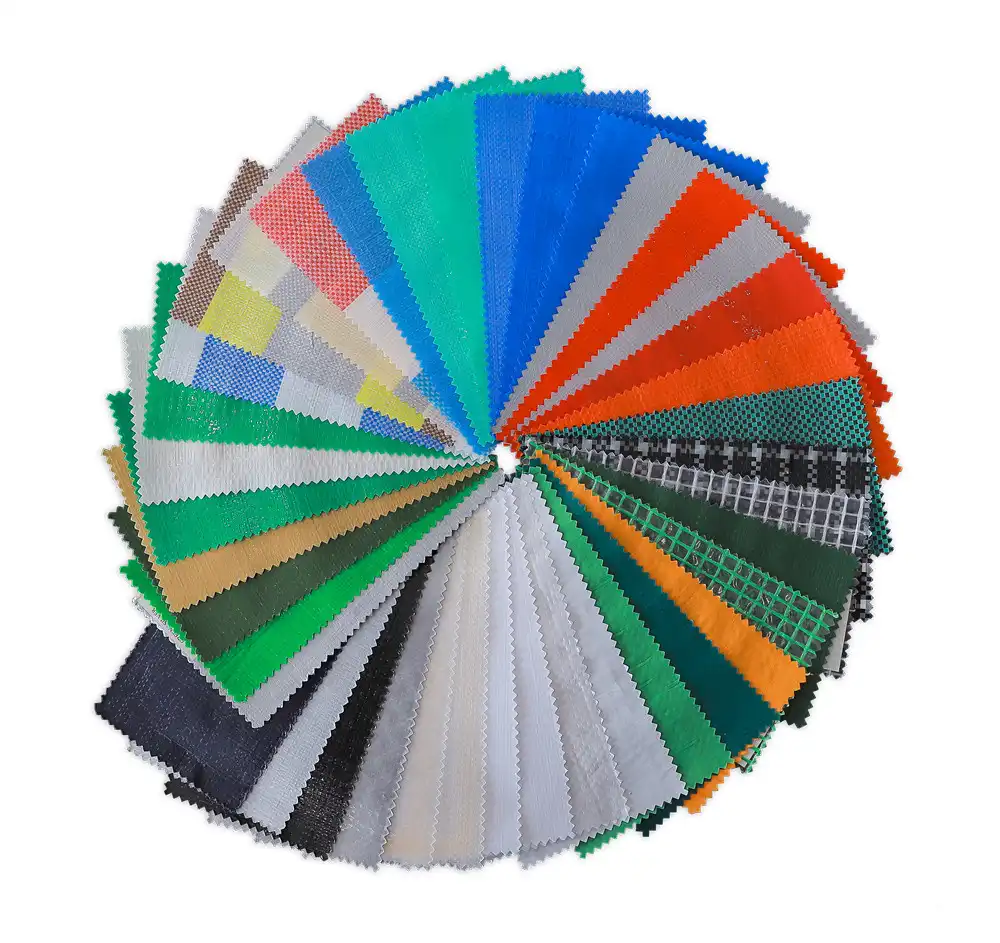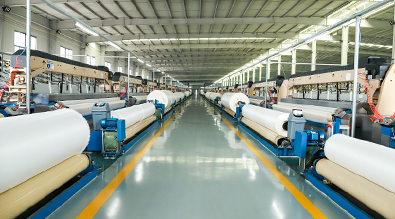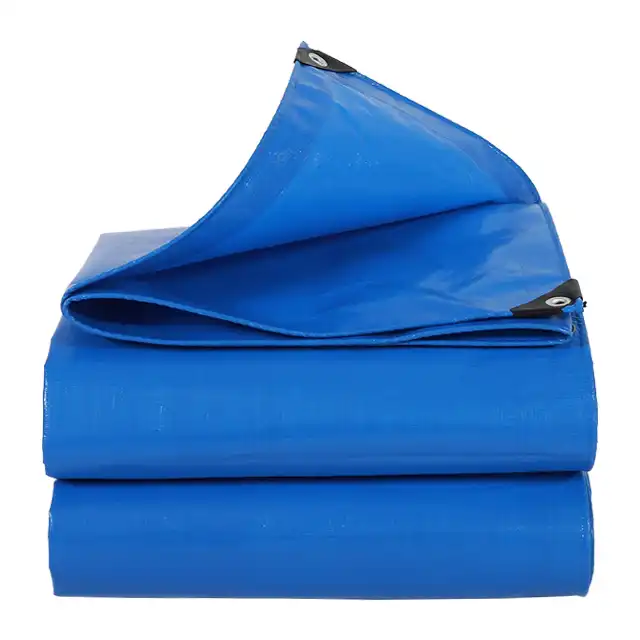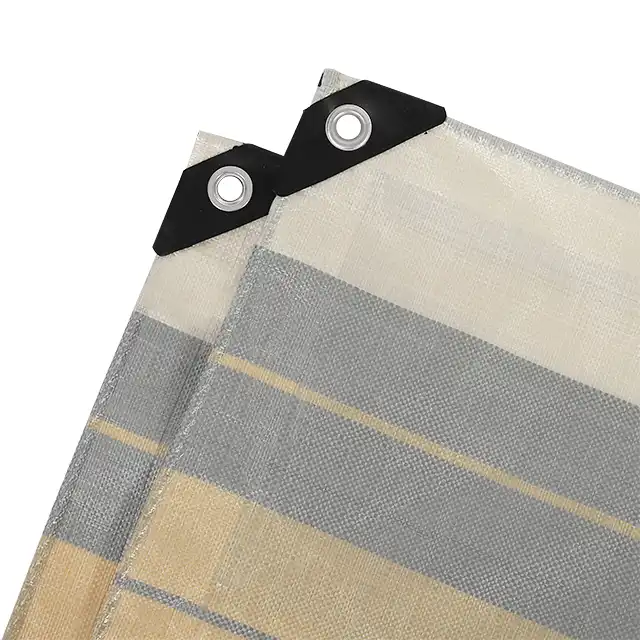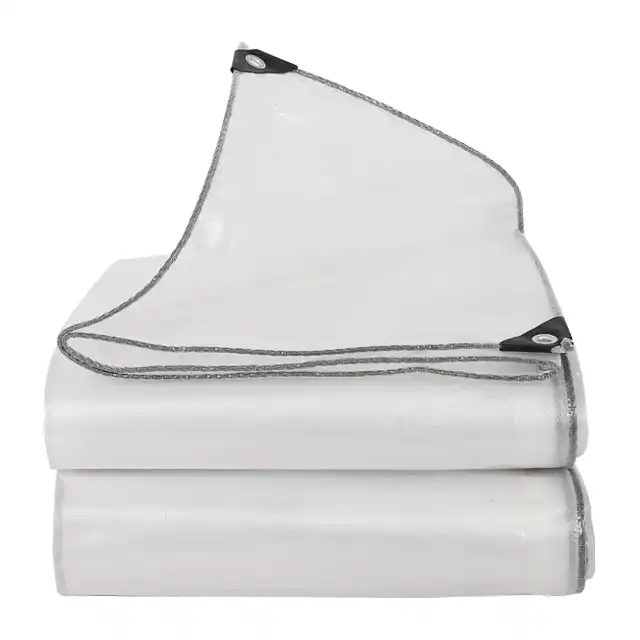How to Repair a Torn PE Tarpaulin Easily?
PE tarpaulins are indispensable protective covers used across countless industries and applications, from construction sites to agricultural operations. However, even the most durable polyethylene tarpaulin can suffer tears, holes, or damage from harsh environmental conditions, sharp objects, or prolonged exposure to UV rays. Understanding how to repair a torn PE tarpaulin easily can save significant costs while extending the life of these valuable protective sheets. Professional tarpaulin repair techniques involve various methods including adhesive patches, heat sealing, and specialized repair tapes that create permanent, weatherproof solutions. The key to successful tarpaulin repair lies in selecting the appropriate method based on the type of damage, the tarpaulin material composition, and the intended application environment.
Quick Fixes for Small Tears and Punctures
Identifying the Extent of Damage
 Before attempting any repair on your PE tarpaulin, conducting a thorough damage assessment is crucial for determining the most effective repair strategy. Small punctures typically measure less than one inch in diameter and often result from sharp objects like nails, branches, or metal debris penetrating the polyethylene surface. These minor damages can usually be addressed with simple patch repair techniques using specialized tarpaulin repair tape or adhesive patches. Medium-sized tears extending between one to six inches require more comprehensive repair approaches, often involving multiple patch layers or heat-sealing methods to ensure structural integrity. Large tears exceeding six inches may necessitate professional repair services or complete panel replacement, especially when they compromise the tarpaulin's primary protective function. Understanding the damage extent helps prioritize repair urgency and select appropriate materials, as emergency repairs might require different approaches compared to permanent solutions. Environmental factors such as temperature, humidity, and UV exposure also influence repair material selection and application techniques for optimal longevity.
Before attempting any repair on your PE tarpaulin, conducting a thorough damage assessment is crucial for determining the most effective repair strategy. Small punctures typically measure less than one inch in diameter and often result from sharp objects like nails, branches, or metal debris penetrating the polyethylene surface. These minor damages can usually be addressed with simple patch repair techniques using specialized tarpaulin repair tape or adhesive patches. Medium-sized tears extending between one to six inches require more comprehensive repair approaches, often involving multiple patch layers or heat-sealing methods to ensure structural integrity. Large tears exceeding six inches may necessitate professional repair services or complete panel replacement, especially when they compromise the tarpaulin's primary protective function. Understanding the damage extent helps prioritize repair urgency and select appropriate materials, as emergency repairs might require different approaches compared to permanent solutions. Environmental factors such as temperature, humidity, and UV exposure also influence repair material selection and application techniques for optimal longevity.
Essential Tools and Materials
Successful PE tarpaulin repair requires specific tools and materials designed for polyethylene applications to ensure lasting repairs that withstand environmental challenges. Professional-grade tarpaulin repair tape represents the most versatile solution, offering UV-resistant adhesive properties that bond effectively with PE surfaces while maintaining flexibility across temperature variations. High-quality repair patches made from compatible polyethylene materials provide superior strength compared to generic alternatives, ensuring repairs match the original tarpaulin's durability characteristics. Heat guns or sealing irons become essential for creating permanent bonds when working with thicker PE tarpaulins, as controlled heat application allows polyethylene materials to melt and fuse together seamlessly. Cleaning solvents such as isopropyl alcohol or specialized plastic cleaners remove dirt, oils, and contaminants that could compromise adhesion quality during repair processes. Additional tools including scissors for precise cutting, measuring rulers for accurate patch sizing, and protective gloves for safe handling complete the essential repair toolkit for comprehensive tarpaulin maintenance.
Step-by-Step Repair Process
The repair process begins with thorough surface preparation, which involves cleaning the damaged area and surrounding region with appropriate solvents to remove all dirt, grease, and debris that could interfere with patch adhesion. After cleaning, allow the surface to dry completely before proceeding, as moisture trapped beneath repair materials can lead to premature failure and compromise the repair's weatherproof properties. Cut the repair patch or tape to size, ensuring coverage extends at least two inches beyond the damage perimeter in all directions to distribute stress effectively and prevent tear propagation. For adhesive repairs, remove backing materials and apply patches with firm, consistent pressure, working from the center outward to eliminate air bubbles that could create weak points. Heat-sealing repairs require careful temperature control, typically between 300-400°F for PE materials, applying steady pressure while the polyethylene softens and bonds. Quality repairs often benefit from double-sided patching, where identical patches are applied to both sides of the tarpaulin for maximum strength and complete hole sealing, particularly important for applications requiring absolute waterproof performance.
Professional Repair Methods for Large Damages
Heat Sealing Techniques
Heat sealing represents the most permanent and professional method for repairing significant PE tarpaulin damage, creating molecular bonds between polyethylene materials that match or exceed the original material strength. This technique works particularly well with high-density polyethylene (HDPE) tarpaulins, where controlled heat application causes polymer chains to intermingle and form continuous bonds across repair joints. Professional heat sealing equipment maintains precise temperature control, typically ranging from 300-450°F depending on tarpaulin thickness and polymer composition, ensuring optimal bonding without material degradation. The process requires careful preparation including surface cleaning, proper alignment of repair materials, and gradual heat application to prevent warping or burning of the polyethylene substrate. Advanced heat sealing techniques incorporate overlap welding, where repair patches extend significantly beyond damage areas and multiple weld lines create redundant sealing barriers for critical applications. Quality heat-sealed repairs demonstrate exceptional durability, often lasting as long as the original tarpaulin material when properly executed with compatible polyethylene components and appropriate environmental conditioning.
Industrial Adhesive Applications
Industrial-grade adhesives specifically formulated for polyethylene bonding offer superior performance compared to general-purpose alternatives, providing structural strength and environmental resistance necessary for demanding tarpaulin applications. These specialized adhesives typically employ modified acrylate or polyurethane chemistries that create mechanical bonds with PE surfaces while maintaining flexibility across wide temperature ranges. Application techniques require precise surface preparation including cleaning, slight surface roughening to improve mechanical bonding, and controlled adhesive application to ensure uniform coverage without excess that could compromise flexibility. Proper curing conditions become critical for achieving maximum bond strength, often requiring specific temperature and humidity ranges maintained over extended periods for complete chemical cross-linking. Industrial adhesive systems frequently incorporate primer applications that improve initial adhesion and long-term durability, particularly important for outdoor tarpaulin applications exposed to UV radiation and thermal cycling. Professional repair services often combine multiple adhesive layers with reinforcing fabric or film layers to create composite repairs that exceed original material properties.
Reinforcement Strategies
Large damage repairs benefit significantly from strategic reinforcement approaches that distribute mechanical stresses across wider areas and prevent failure propagation from high-stress concentration points. Fabric reinforcement layers, typically using compatible polyethylene or polypropylene woven materials, provide additional tensile strength while maintaining tarpaulin flexibility and environmental resistance. Multi-layer repair systems incorporate alternating adhesive and fabric layers, creating laminated structures that offer superior tear resistance compared to single-layer repairs while maintaining reasonable thickness profiles. Edge sealing techniques prevent moisture infiltration and contamination that could compromise long-term adhesion, often involving specialized sealants or additional tape applications around repair perimeters. Stress distribution techniques include tapering repair edges and incorporating stress relief cuts that prevent concentrated loading at repair boundaries during normal tarpaulin deployment and tensioning. Professional reinforcement strategies also consider the specific loading conditions and environmental exposures the repaired tarpaulin will encounter, customizing repair approaches to optimize performance for intended applications.
Preventive Maintenance and Care Tips
Regular Inspection Protocols
Implementing systematic inspection protocols significantly extends PE tarpaulin service life by identifying potential problems before they develop into major damage requiring extensive repairs. Monthly visual inspections should focus on high-stress areas including grommets, corners, and fold lines where material fatigue typically initiates, examining these regions for early signs of wear, discoloration, or minor cracking. Environmental exposure assessment involves checking for UV degradation indicators such as surface chalking, brittleness, or color fading that suggest polymer degradation and increased susceptibility to mechanical damage. Systematic documentation of inspection findings, including photographs and detailed notes, creates valuable maintenance records that help identify recurring problem areas and optimize replacement scheduling. Professional inspection protocols often incorporate tensile testing of critical areas using calibrated equipment to quantify material strength retention over time. Advanced inspection techniques may include ultrasonic thickness measurements and thermal imaging to detect delamination or hidden damage in multi-layer tarpaulin constructions.
Proper Storage Practices
Optimal storage conditions play a crucial role in maintaining PE tarpaulin integrity and preventing premature degradation that increases repair frequency and reduces overall service life. Temperature-controlled environments between 32-85°F minimize thermal stress cycling that can cause polymer chain degradation and reduce material flexibility over time. UV protection during storage prevents photodegradation of polyethylene molecules, requiring storage areas with minimal direct sunlight exposure or UV-filtering covers for outdoor storage situations. Proper folding techniques avoid creating permanent creases that concentrate stress during deployment, preferring loose rolling methods when storage space permits or alternating fold lines during long-term storage periods. Moisture control prevents mold growth and hydrolytic degradation, particularly important for tarpaulins with organic reinforcement materials that could support biological growth in humid conditions. Chemical isolation from petroleum products, solvents, and reactive substances prevents contamination that could compromise material properties or interfere with future repair adhesion.
Quality Enhancement Strategies
Modern PE tarpaulin manufacturing incorporates advanced polymer formulations and processing techniques that significantly improve durability and reduce maintenance requirements compared to traditional polyethylene products. High-density polyethylene (HDPE) woven fabrics provide superior tear resistance and dimensional stability, while low-density polyethylene (LDPE) coatings offer enhanced flexibility and weatherproofing performance. UV stabilizer additives, typically comprising 1-7% of the polymer composition, dramatically extend outdoor service life by preventing photodegradation that causes brittleness and discoloration. Quality manufacturing processes including controlled extrusion temperatures, precise weaving tensions, and optimized coating application ensure consistent material properties and eliminate weak points that could initiate premature failures. Advanced surface treatments such as corona discharge or flame treatment improve adhesion characteristics for repairs while maintaining excellent environmental resistance. Premium tarpaulin products often incorporate multi-layer constructions with specialized barrier films that provide enhanced chemical resistance and reduce permeability for critical applications.
Conclusion
Effective PE tarpaulin repair combines proper damage assessment, appropriate repair techniques, and quality materials to restore protective performance while maximizing service life. Understanding the relationship between damage types and optimal repair methods enables cost-effective maintenance strategies that preserve valuable tarpaulin investments. Professional repair techniques including heat sealing and industrial adhesives offer superior durability for critical applications, while preventive maintenance protocols significantly reduce repair frequency and extend overall service life.
When seeking reliable, high-quality tarpaulin solutions, partnering with established manufacturers ensures access to superior products and technical expertise. As a leading China Tarpaulin factory and China Tarpaulin supplier, Linyi Shengde Plastic Co., Ltd. has served the global market since 2003, providing comprehensive China Tarpaulin manufacturer services with ISO 9001:2015 certification. Our position as a trusted China Tarpaulin wholesale provider stems from partnerships with UNHCR, IOM, ICRC, and UNICEF, demonstrating our commitment to High Quality Tarpaulin production. Whether you need standard products or custom solutions, our Tarpaulin for sale offerings include various weights from 65-280gsm with competitive Tarpaulin price structures. Contact us at info@shengdetarp.com to discuss your specific requirements and discover why customers in over 30 countries trust our expertise for their critical tarpaulin applications.
References
1. "Polyethylene Film and Sheet Technology" - Johnson, R.M., Material Science Quarterly, Volume 15, Issue 3
2. "Adhesive Bonding of Polyolefin Materials" - Chen, L. & Williams, K., Journal of Applied Polymer Science, Volume 128
3. "UV Degradation and Stabilization of Polyethylene Tarpaulins" - Martinez, A.S., Polymer Degradation and Stability Research, Volume 89
4. "Heat Sealing Technology for Thermoplastic Films" - Thompson, D.J. & Roberts, P.L., Packaging Technology International, Issue 47
